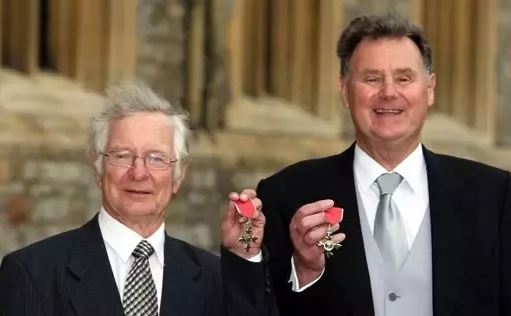The Duckworth-Lewis Method instantly comes to our minds whenever a limited overs cricket match gets affected by rains. It’s a formula that decides the fate of a match in such situations. This is all I know about it as I am yet to come across anyone who perfectly understands the calculation. So we will not go into that.
But the bigger question which has been lingering in my mind is, who exactly are Duckworth and Lewis and why their calculation has been adapted by the International Cricket Council [ICC]?
I decided to explore this. Hence, this article is also a personal learning for me as I went searching on the internet about Duckworth and Lewis.
As it turns out the method has been named after Frank Duckworth and Tony Lewis, the duo which brought about the calculation in rain affected matches.
*********************
Frank Duckworth:
Born in 1939, Frank Duckworth is a retired statistician from Lancashire, England. He has a BSc Hons in Physics and PhD in Metallurgy from the University of Liverpool. He has worked as a mathematical scientist for the nuclear power industry in the UK and is the editor of the Royal Statistician Society’s monthly news magazine called RSS News.
Apart from contributing in the Duckworth-Lewis method, he also singlehandedly developed the ‘Duckworth Scale,’ which can be read about HERE.

Tony Lewis:
The life of Tony Lewis has been pretty much the same. Born in 1942, he also hails from Lancashire and holds degrees in statistics and mathematics from Sheffield University in the 1960s. He was a lecturer in Quantitative Research methods at Oxford Brookes University and University of the West of England. Currently, he is the chairman of the Western Operational Research Discussion Society.
*********************
Apart from this, nothing much is known about their personal lives. But recently there was an interesting article published in Dawn.com, which narrates how the two of them formed a duo and developed the Duckworth-Lewis Method.
To understand this, it is important to know the back story of rain affected matches in cricket. When ODI cricket was in its initial stages in the early 1970s, the cricket governing body adopted the rule of taking into consideration the run-rate of the teams.
It was an unfair method because it didn’t consider the number of wickets lost by a team. For example, if a team is chasing a score of 200, it should have at least 100 runs on board by the 25th over in order to be declared winners. However, the team will qualify to win even if it has lost 9 wickets to reach the score of 100 in 25 overs.
This rule was done away with in the 1990s and ‘Most Productive Overs’ rule was adopted, which turned out to be an embarrassment after the 1992 World Cup Semi-Final between England and South Africa. For the uninitiated, the latter needed 22 runs in 13 balls to win when the rains poured in. After resuming, as per the new method, needed 22 off just 1 ball.
In between in the 1980s, Duckworth had sent his own scoring formula to decide the fate of rain affected matches but it was rejected by the cricket governing body for being ‘too complicated.’
But he saw his chance after the debacle of the 1992 Semi Final. When he was giving a presentation of his method at Royal Statistical Society few months later, Tony Lewis, who was sitting in the audience, got interested in it.
Also read: WC Final 2019 – Cricket won, ICC lost
The two got together, worked out their formula, which came to be known as Duckworth-Lewis Method, and presented it to the cricket governing body which, was then called the ICC. Their formula was accepted since it also took into account the number of wickets lost by teams.
Their method was first implemented on 1 January 1997 in the England v/s Zimbabwe match at Harare. See the scorecard HERE.
Over the years, the method has received numerous criticisms for being unfair. In the same interview with the Dawn, Duckworth also honestly accepts that the method is not foolproof since it doesn’t take into consideration the identity and ability of batsmen who are yet to bat.
Their formula is reviewed and updated every two years. Duckworth and Lewis gave up looking after their formula six years ago as they decided to retire. They handed over its responsibility to Steven Stern, an Australian professor of statistics. Hence, the formula got a new name – DLS method – with the ‘S’ signifying Stern.
Duckworth and Lewis were appointed Member of the Order of the British Empire [MBE] by Queen Elizabeth II in 2010.
Additional reading:
When hearing issues stopped India from winning against England
How Pakistan was saved by rains from a difficult situation in 1992 World Cup